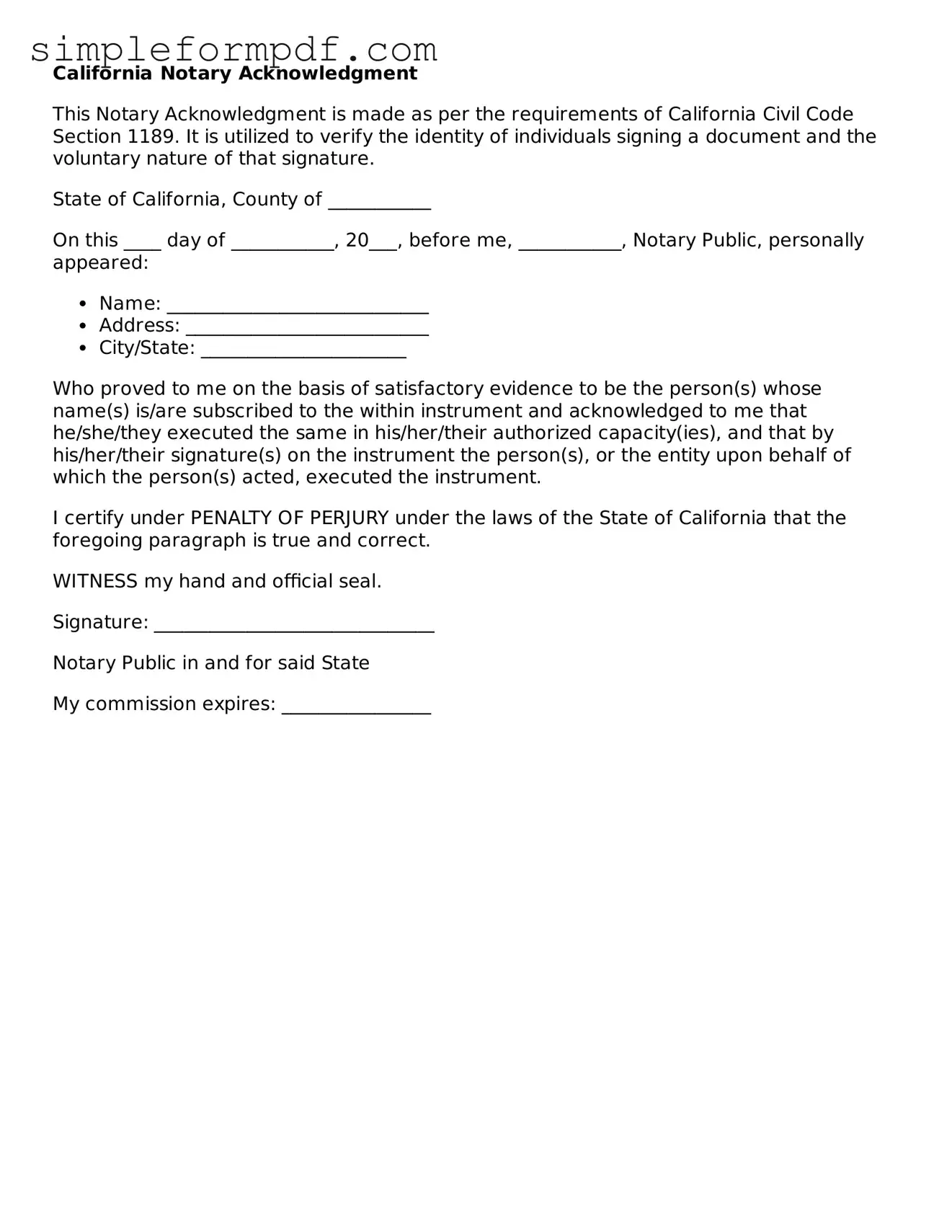Free Notary Acknowledgement Form for the State of California
The California Notary Acknowledgement form serves as a vital document that verifies the identity of individuals signing a legal document, ensuring that they are doing so willingly and under no duress. This form is essential in various transactions, including real estate deals and legal agreements, as it adds an extra layer of authenticity and protection. If you need to complete this important step, consider filling out the form by clicking the button below.
Launch Editor
